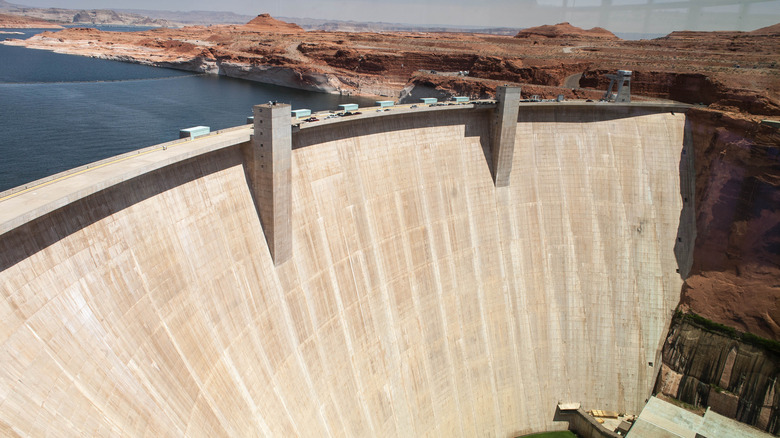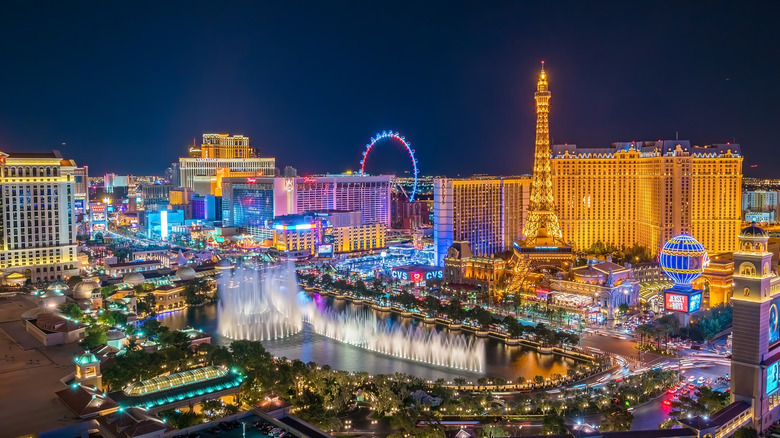Here's What Would Happen If The Hoover Dam Broke
After its completion in 1936, the Hoover Dam has been among the largest and most important hydroelectric plants in the world. The approximately 4 billion kilowatts of electricity it generates supplies power to Nevada, Arizona, and California (via Bureau of Reclamation). Its importance has been so great that even the Axis had a desire to destroy it during World War II. More indirectly, it has also had a massive cultural impact; the legalization of gambling in Nevada was at least partially in response to workers and later tourists traveling to and from the site (via Las Vegas Review-Journal).
According to Online Nevada, these new (legal) casinos and the increased water supply led to the growth of Las Vegas into one of America's largest cities. As a major source of electricity and water for both drinking and farming, Hoover Dam currently keeps millions of people alive. As of 2021, it may even be used to generate further power via wind and solar power (via The New York Times). With all this actual and theoretical infrastructure centered on it, it stands to reason that disaster would follow any major damage to Hoover Dam (via HowStuffWorks).
Without Hoover Dam, millions across the country would suffer
The most immediate damage would be caused by catastrophic flooding, damaging if not completely destroying many towns, cities, and Native American reservations in the surrounding states. Local agriculture would suffer from the loss of water, leading to the risk of mass starvation. While easy to assume, Las Vegas only recently started to take in power from Hoover Dam, having previously sourced electricity through other means (via Popular Mechanics). Its lights therefore might shine for a little while longer. However, even if it were 100% self-sufficient, the loss of hydroelectric power in surrounding areas could lead to the Vegas electrical grid being diverted to them.
This would certainly result in at least partial blackouts for the city. The effects of no water (which primarily comes from Lake Mead, a reservoir formed by the Hoover Dam), food, or air conditioning in the middle of a warming desert could result in a massive number of refugees. Across the region, urban areas under these strenuous conditions might see a huge increase in crime not unlike that of the 1977 New York City blackout (via Time). This would necessitate a massive yet rapid relief effort by the state and federal governments to prevent as much loss of life as possible.

